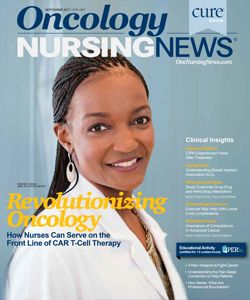Helping Patients Manage Work-Life Balance During and After Treatment
During and after treatment, the majority of patients will be back at their jobs sometime after diagnosis and treatment, but that doesn’t have to come with emotional distress if possible outcomes are discussed.

When I was diagnosed with breast cancer in 2015, I had a strong desire to work through treatment. I was the primary breadwinner for my family and our source of medical insurance. These are reasons many patients with cancer offer for wanting to work. The average annual medical costs are $4187 higher for female cancer survivors and $3293 higher for male cancer survivors than for their peers. Work was also an anchor to the routines and order of my normal life, a source of meaning, self-esteem, and social support. For these reasons, I never questioned that I would work, only how. My healthcare team was supportive of my desire, but provided little informational or practical support toward this goal. The results of one study indicate that just 1 in 4 persons undergoing cancer treatment reports receiving work-related advice from a medical provider, although those who did were more likely to return to work afterward.
More than one-third of those patients who receive a cancer diagnosis are of working age, and the majority will return to work sometime after diagnosis or treatment. Some work fulltime through treatment, others choose to reduce schedules. The average time away from work is about 5 months. Whether and how much a person is able to work depends upon diagnosis, treatment, and adverse effects (AEs); work tasks; workplace flexibility; and support from supervisors, coworkers, family, and friends. The wide variability makes it difficult to foresee how things will play out. Still, being able to talk with those in your own care and explain the range of possible outcomes can be reassuring and helpful as they make work decisions.
EMOTIONAL DISTRESS AT WORK
The first few weeks after a positive cancer screening are a whirlwind of emotions, appointments, tests, and waiting for and often receiving upsetting news. The call about my diagnosis came at the beginning of a work day. As I hung up the phone, I burst into tears. I tried to get back to work, but my mind was stuck on the news. I began researching my diagnosis, then closed the webpage. I was opening a spreadsheet when my officemate walked in and asked how I was doing. I burst into tears again. Finally, I made my excuses and took the rest of the day off.
Many employees do not have a private space at work to take calls or process bad news. Asking your patients early on about work schedules and when they prefer to receive calls can help patients better manage their time and reduce the emotional distress.
IMPACT OF DIAGNOSIS AND TREATMENT
Those with earlier-stage cancers, curative surgeries, and no postoperative complications will likely have the easiest time working through treatment or returning to work quickly compared with those undergoing chemotherapy and radiation treatments who may have a more difficult time. Be aware of the AEs your patient is experiencing and how these affect their work. Helping patients adjust to radiation and chemotherapy schedules to accommodate jobs is an important factor in how much work they will need to miss. The fatigue and nausea associated with chemotherapy are cyclical. Help the patient understand which days will be the worst so they can schedule appointments when they will be less disruptive to their work.
WORKPLACE FACTORS
Have a discussion with patients about their work duties and workplace polices, flexibility, and support systems. Gain at least a general understanding of national and local employment laws related to medical leave. You don’t need to be an expert on the details to be a helpful source of advice for patients. The Family Medical Leave Act (FMLA), for instance, allows workers at companies with 50 or more employees to take up to 12 weeks of unpaid leave. Employed spouses may also use FMLA leave to care for their family members. And because the leave can be taken intermittently, employees can use this policy to take the day of their treatment off or to take off time as needed to recover from AEs and still work on the days they feel more like themselves.
Encourage your employed patients to get familiar with their workplace benefits. Can they work from home? They may prefer to take a break from the constant well-meaning questions about their health and appreciate the privacy as they adjust to changes such as hair loss, ostomy bags, mastectomies, etc.
Being cognizant of the work responsibilities of those you are caring for and their preferences with regard to work will help your patients to be more successful in achieving these outcomes and allow them to feel more like the whole person they are rather than just a patient with cancer.
Ginger Hanson is an assistant professor at the Johns Hopkins School of Nursing in Baltimore, Maryland.

Innovative Program Reduces Nurse Turnover and Fosters Development
Published: September 12th 2024 | Updated: September 12th 2024The US Oncology Network (The Network) has developed one of the most comprehensive programs in the nation to support the professional development and retention of new oncology nurses.



